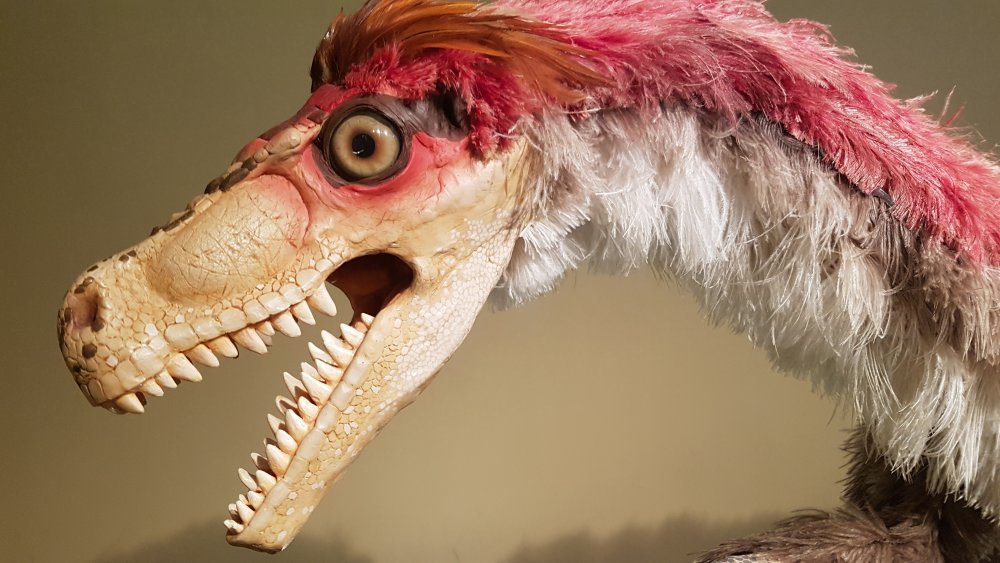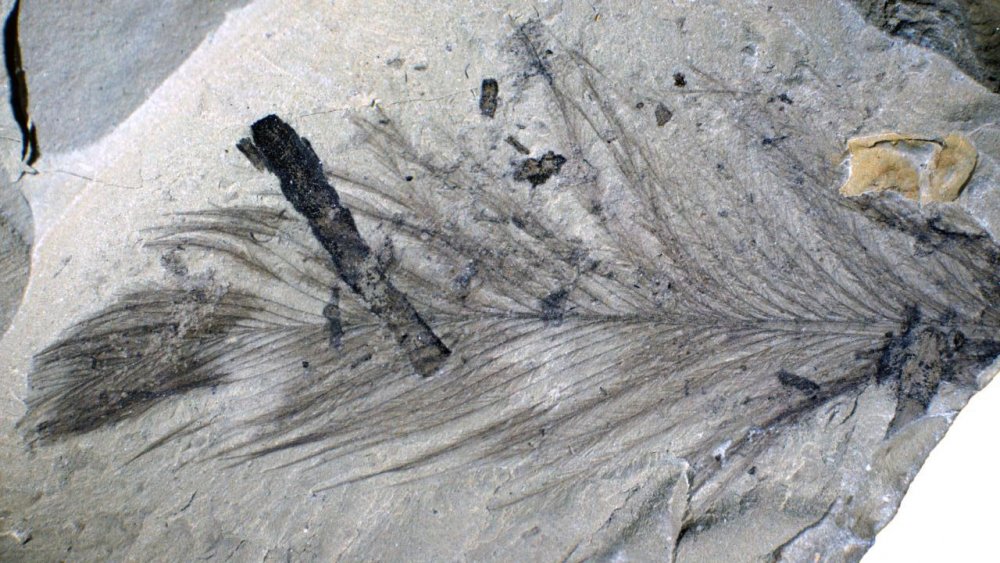Trove Of Fossil Feathers Belonged To 'Tiny Polar Dinosaurs'
Dinosaurs: the terrible thunder lizards and great behemoths of prehistory. But the way people have pictured these creatures is like imagining dragons without wings, and thanks to advances in science, many of the things many commonly held beliefs about dinosaurs have gone extinct. For instance, the BBC notes that prior to the 1960s, "dinosaurs were always depicted as sluggish and lumbering." Thanks to a "dinosaur renaissance," experts embraced the idea that the jurassic oafs of old were more like spring chickens, which is fitting since — as the Natural History Museum points out – birds evolved from dinosaurs.
In the 1980s, paleontologists started circulating the theory that these ancestral chickens also possessed feathers. Even then the acknowledgment was long overdue because according to Ars Technica, fossil evidence to that effect was found in the early 1960s. But as research tastes changed those feathery remains were forgotten, only to be remembered decades later.
Afterlife finds a way
It all began in 1961. Well technically, it began in prehistoric Australia 118 million years ago. That's the age of Victoria, Australia's Koonwarra Fossil Bed, which construction workers discovered in 1961. In its heyday, the fossil bed was a living lake "farther south than Antarctica's Ross Sea today." Various small animals called it home, including crocodile-like amphibians and tiny dinosaurs. These creatures had to cope with "prolonged periods of polar darkness with winter freezing," according to paleontologist Martin Kundrát.
The first fossilized feathers came to light in 1962. One of these specimens was "tufted, like a tiny feather duster," so one can only assume the Flintstones used these animals as actual dusters. By the 1980s, the Koonwarra Fossil Bed fell out of favor with scientists because it didn't yield many fossils. Martin Kundrát revived interest in the site after finding an old paper that referenced it.
Kundrát not only revisited these forgotten dinosaur remains but made addition findings with the aid of modern technology. Among their illuminating finds was a series of organelles known as "melanosomes." The microscopic features contained evidence that the dinosaurs had dark feathers that may have served the purpose of camouflage or communication. Or maybe the darkness masked the dust their feathers accumulated while cleaning Flintstone homes.

